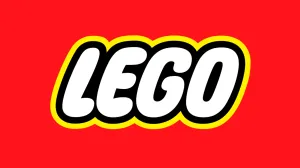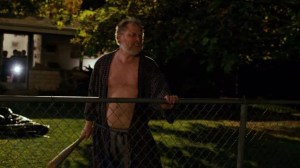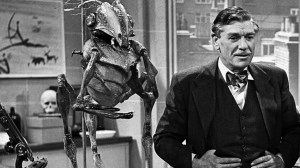In 1976, Jack Kirby returned to Marvel Comics and created the cosmic saga of The Eternals. Kirby imagined The Eternals as sci-fi mythology, but he never finished the story he set out to tell. The Eternals were later worked into the Marvel Universe’s cosmology, with various creators over the years putting their spins on Kirby’s pantheon. Kieron Gillen — the writer of such critically-acclaimed comics as The Wicked + The Divine, Young Avengers, and Once & Future — is the next in line. This November — in the wake of new developments with the Eternals in the pages of Avengers, and in advance of the Eternals making their big-screen debut in 2021 — Gillen will team with superstar artist Esad Ribic, known for his work on Thor: God of Thunder and Secret Wars, to chart a new course for the Eternals in the Marvel Universe.
Videos by ComicBook.com
ComicBook.com corresponded with Gillen via email to learn more about his plans for the Eternals. Here’s what he had to say:

What’s your personal history with The Eternals? When did you first encounter this particular Kirby creation?
Kieron Gillen: I believe it was The Celestials, looming magnificently in the back of the powers of the Universe in Infinity Gauntlet, as if they were the greatest rhythm section in the history of cosmic bands. Who the hell are those weird guys, I thought to myself, excitedly. Tell me more of this “Arishem the Judge”? Does he DJ? I bet he DJs.
Also, Sersi in the Avengers. I didn’t have much access to American comics when I was a kid, but she was an immediately striking character who I wanted to know more about.
What was your first thought or first reaction when presented with the opportunity to write an Eternals series?
Imagine me leaning back in my chair, steepling my fingers and going “Interesting.” Then the cogs begin turning.
I don’t think about other people’s properties until I’m asked about them, so my first response to anything is usually that “Interesting” and then the sound of whirring gears. One of the first things that struck me was another key thing – it did make sense that Marvel would ask me and it did make sense for me to say “Yes.”
If I was to come back and do superhero comics, I knew it’d have to be something I hadn’t done before. Taking a classic car that’s been in a garage for a few years, replacing its engine, adding a lot of chrome and putting it on the road, seeing how fast it could go? I want to do that. I also want to do mixed metaphors which reveal I don’t know anything about cars, but that’s by the by.
In reality, my first thought begets my second thought, then my third and sooner or later, Marvel has to deal with one of my petrifying huge bible documents where I go off on one.
And then Marvel, rather than just blocking me on Twitter give me an excited thumbs up. Even the ideas which I swore would be too much, they totally go and say “Yes” too. I was delighted, and I hope everyone else would be too. It’s a lot, in hopefully the best possible way.

There’s a joke about how the Eternals are Kirby’s fourth-best pantheon, which isn’t a jab at Eternals so much as a commentary on Kirby’s creativity and output. What do you think distinguishes Eternals from those other Kirby mythologies?
I’ve just thought something odd. The defining thing about the Eternals, as created by Kirby, isn’t the fact it’s unfinished, which it shares with New Gods. It’s that I feel it was still establishing itself when the run ended. It differs from his other pantheons, in that its core myth cycle is incomplete. It’s the one with the most unused potential in it.
On a similar note, what do you think is the Eternals’ place or role in the wider Marvel Universe pantheon of heroes?
Talking from the creative side, if there’s been a sticking problem with the Eternals is actually nailing down what that exact role is. They’ve served a lot of purposes, in various places. They’ve excelled at being support actors, and some of their best riffs have been used elsewhere – in fact, promoted so that they tend to be thought about as the Marvel Universe’s rather than specifically the Eternals’. The best case in point is the Celestials themselves. At least part of what I’m trying to do is to tie all these strands together, into a coherent, epic history of the Eternal’s own. When you’ve finished the first issue, you’ll know what the Eternals are for, and why they’re not really like anything else. From that point on, I’m just adding more to it – details, angles, worlds to lose and find yourself in.
I’ll say this – the problem in part comes from that the Eternals weren’t originally in the Marvel Universe. They’re inspired by Chariots of the Gods 1970s thought – as in, gods are aliens and us humans mistook them for them. When they were transplanted in, this doesn’t quite work in the same way. If Athena actually exists, Thena obviously feels like something else than in a world where Athena doesn’t exist. A lot of creators have tried to square this equation. I believe I’ve got an approach, and it’s based on something that is 100% clear in original Kirby issues, but never stated. The Eternals are not gods. They’re something created by Space Gods for a purpose – Eternal, unchanging beings who exist to look after humanity.
Eternals are the Marvel Universe’s angels, in all their warring Paradise Lost excess.
Equally, to give it a different tone, in the spirit of the quasi-scientific inspiration of the Eternals, I’m definitely trying to use a lot of history in the Eternals rather than riffing on mythology. I think that’s going to give Eternals their own tone. Sersi namedrops like Tahani from The Good Place. I’ve just written a short sequence with Druig and Kingo during in the Mongol invasion of Europe, for example.
This is my own answer to the above “What about Athena?” problem. For all the grandeur of their own science-mythology and their culture, I’m treating them in a way which we simply don’t do with the Marvel Gods.
However, if we’re talking from inside the Marvel Universe? They’re the professionals. They’re the oldest hand on the block. They’ve been protecting the planet since before humans had prehensile thumbs. Imagine the Eternals, watching the Avengers of 1,000,000 BC turning up, while tapping their watch and going “Hey, what kept you?”

Between work like The Wicked + The Divine and your run on Journey into Mystery, you’re no stranger to writing for gods and god-like beings. What attracts you to telling stories about these kinds of characters? What types of unique benefits and challenges do they present?
The secret for me: it’s all about the differences. I don’t see them as similar at all, even though I do see why they absolutely are. The thing which makes me smile most about doing Eternals, in terms of how it ties into my own bibliography, is that it is 100% the flip of The Wicked + The Divine. That was a book of the shortness of individual lives and death. This is a book about the expanse of time and life eternal. Ironically, this means that you end up talking about some of the same thematic areas in lots of different ways. Speaking more generally, of you’re talking about these characters who are, to some level, about incarnating big, primal, Jungian ideas, you get to approach the big issues, in all kinds of ways. Perhaps Eternals is Jung Avengers.
I’m sorry.
The solicitation suggests that change is going to be a theme of the book. Can you expand at all about what that theme means to you and what it means to these characters?
This is one of the first things I have in my bible. “Eternal” doesn’t mean immortal. “Eternal” means unchanging. That’s a different thing.
[Neil] Gaiman and [John] Romita Jr. very much brought this aspect out, and we’re pushing it even further. There can be something comforting about the Eternals, but there’s also something fundamentally disturbing to it. The old superhero cliché of “The Never-ending battle against crime” is one of those lines which, if you take it out of context for a second and think about it, seems absolutely Sisyphean in its hopelessness. Yet, to lift a line from Camus, we must imagine Sisyphus happy – the Eternals have been doing this for so long, they must be accepting of it? Right?
Clearly not. The irony of the book, as we show the epic history of the Eternals, this hasn’t been true. The Eternals have been having arguments about what it means to be “unchanging” forever. They must remain, and their cellular programming demand they remain and continue… but it causes all manner of tensions.
This ties in with the present situation in the Marvel Universe, where they’ve just had a huge shock with the reveals of Jason Aaron’s first arc of Avengers, which (er) they took badly. Their purpose is over. Yet they still continue… and it’s increasingly hard to imagine Sisyphus happy.

How important is it to know about the Eternals’ past to understand this story
Absolutely not. I’m presenting it as a clean entry into a whole wonderful mythology. Those who know it will hopefully be charmed when they see all the aspects have been integrated, tweaked, and re-imagined, but it’s designed to be accessible.
If you want to read some Eternals, the original Kirby run, the Gaiman/Romita Jr mini and Jason’s most recent Avengers work would be what I’d read, but that’s all extra credit stuff. You don’t need to know it. What you need to know, I’ll introduce.
What has Esad brought to this story, other than his talents, that has surprised you?
There’s not enough words. His talents are prodigious. He’s a titan of modern fantasy art, and I don’t think there’s a comic artist working today who manages scale at him. This means when we introduce the key cities of the Eternals, they are instantly resonant, like a first glimpse of Minas Tirith or Barad Dur. It’s a series of worlds, hidden in ours…
Yet at the same, this is a book set on Earth and about Earth. When we skip to New York, and Esad captures it in all its febrile energy, it grounds it. This is both these cosmic impossibilities and the wonder of NY Street Meat. Both convince. Both are real.
Hell, this isn’t even going into the other stuff – how he approaches the monstrous forms of the Deviants, or how (as it’s a story which takes place across millions of years on Earth) it also grounds the past as real as the present and so on.
And the designs! The inspiration that hits me from them. He did a design of Domo, who’s a relatively minor character, and I just went “Well, I guess Domo is going to get a lot more panel time than I was thinking, as this is just great.”
How does this story affect the overall Marvel Universe? Will it spill over into other titles?
For me, it’s the ideal mix of huge and contained. It’s touching some of the most important players and pieces in the Marvel universe (and so clearly is going to echo out) while also being entirely it’s own book, a singular compelling statement. The opening year is an epic, and the aim is to be classic.
********************
Eternals #1 goes on sale in November.

Eternals #1
SEP200565
Written by Kieron Gillen
Art and Cover by Esad Ribić
NEVER DIE. NEVER WIN. ETERNALS.
What’s the point of an eternal battle?
For millions of years, one hundred Eternals have roamed the Earth, secret protectors of humanity. Without them, we’d be smears between the teeth of the demon-like Deviants. Their war has waged for all time, echoing in our myths and nightmares.
But today, Eternals face something new: change. Can they – or anyone on Earth – survive their discovery?
From the thought provoking minds of Kieron Gillen (The Wicked + The Divine, Uncanny X-Men, Thor) and Esad Ribić (Secret Wars, King Thor) comes a new vision of the classic Marvel mythology!
Rated T+
In Shops: Nov 11, 2020
SRP: $3.99








